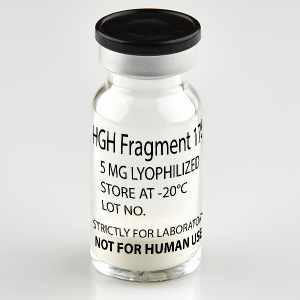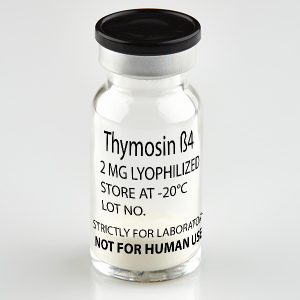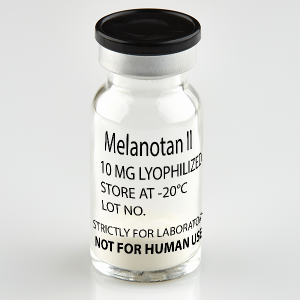Peptide Blog
Palmitoyl Tetrapeptide was originally developed as a potential immunostimulatory and neurotrophic (can regrow nervous tissue) peptide. It is still under active investigation for its ability to encourage nerve healing, particularly after burns and tissue grafts [2].
Recently, interest in rigin has increased among researchers involved in trying to understand how extracellular matrix (ECM) growth is modulated. Palmitoyl Tetrapeptide is being investigated in animal models for its ability to influence collagen and elastin synthesis in the ECM and thus for its ability to improve skin elasticity and firmness [3].
Matrixyl is a lipopeptide, a fatty acid mixed with amino acids. It is also considered to be a synthetic isomer (an isomer is a molecule that has an identical structure to another molecule but different atomic components). The active element in Matrixyl is called Micro-collagen - another peptide.
SNAP-8 is a mimic of the N-terminal end of SNAP-25 which competes with SNAP-25 for a position in the SNARE complex, thereby modulating its formation. If the SNARE complex is slightly destabilized, the vesicle can not release neurotransmitters efficiently and therefore muscle contraction is attenuated, preventing the formation of lines and wrinkles
IGF-2 is a member of the insulin family of polypeptide growth factors that is involved in development and growth. It is an imprinted gene and is expressed only from the paternally inherited allele. It is a candidate gene for eating disorders. There is a read-through, INS-IGF2, which aligns to this gene at the 3' region and to the upstream INS gene at the 5' region. Two alternatively spliced transcript variants encoding the same protein have been found for this gene.
IGF1-LR3 is a modified version of insulin-like growth factor-1. The full name of the peptide is insulin-like growth factor-1 long arginine 3. All IGF-1 derivatives play prominent roles in cell division, cell proliferation, and cell-to-cell communication. Though it has similar effects, IGF-1 LR3 does not adhere to IGF binding proteins as strongly as IGF-1. This results in IGF1-LR3 remaining in the bloodstream 120 times longer than IGF-1. IGF1-LR3 gains its prolonged half-life as a result of its structural changes. The peptide is created by adding 13 amino acids to the N-terminal end of IGF-1 and by converting the glutamic acid at position 3 of IGF-1 to an arginine residue.
IGF-1 DES is a truncated version of IGF-1 in which the tripeptide Gly-Pro-Glu is absent from the N-terminus end of the protein. It is actually a naturally occurring variant of IGF-1 and has been found in the human brain, cow colostrum, and pig uterine tissue. IGF-1 DES is 10 times more potent than IGF-1 in stimulating hypertrophy and proliferation of cells because it is not affected by IGF-1 binding proteins and therefore is more bioavailable. There is interest in using the peptide to induce anabolism in catabolic conditions (e.g. chronic illness) and in the treatment of inflammatory bowel disease[1, p. 1].
IGF-1 DES has also been of keen interest in the treatment of a number of neurological and neurodevelopmental conditions. Researchers investigating autism and autism spectrum disorders have found that IGF-1 and its analogues have potent effects on the synaptic health neurons. In animal models of autism, IGF-1 DES and IGF-1 have relieved symptoms and improved a number of the behavioral aspects of the condition.
Pal-GHK (also called palmitoyl tripeptide-1 and palmitoyl oligopeptide) is a synthetic peptide known for its effects on collagen, skin health, and skin pigment. It is currently under investigation for its ability to boost collagen synthesis in animal models as well as for its ability to stimulate blood vessel growth.
PT-141, also called bremelanotide, is sometimes referred to as the female Viagra because the peptide was previously investigated in phase IIb human clinical trials for use in treating female hypoactive sexual desire disorder (HSDD). PT-141 is a melanocortin that binds primarily to melanocortin 4 receptor (MC-4R) and MC-1R. In 2009, PT-141 was also investigated as a treatment for acute hemorrhage. PT-141 is a derivative of another synthetic melanocortin, melanotan 2 (MT-2).
Melanotan 2 (MT-2) is a synthetic version of human alpha-melanocyte-stimulating hormone (α-MSH). It was originally developed in the 1980s, at the University of Arizona, after it was found that α-MSH caused sexual arousal in rodents as well as darkening of the skin. Originally designed as a sunless tanning option, MT-2 was eventually found to have a wide range of effects such as:
- increasing sexual arousal,
- promoting tanning or skin pigmentation,
- reducing compulsive behavior,
- controlling addiction,
- fighting hunger,
- reducing glucagon production, and
- reversing features of autism.
Melanotan 1 is a synthetic analogue of alpha-melanotocyte stimulating hormone. It is used clinically, in Europe, to prevent sun-related skin damage (i.e. phototoxicity) from occurring in people suffering from erythropoietic protoporphyria. Though initially developed as a sunless tanning agent, melanotan 1 has been found to have a number of physiologic effects on blood pressure, feeding behavior, central nervous system function, and more. The peptide is in phase 3 clinical trials for the treatment of polymorphose light eruption and is in phase 2 clinical trials for the treatment of actinic keratosis (a specific type of skin damage caused by the sun) and its more serious counterpart, squamous cell carcinoma.
Melanotan 1 is very similar to naturally occurring alpha melanocyte stimulating hormone (alpha-MSH). Alpha-MSH is primarily known for its influence on melanocytes, the cells in skin and hair responsible for pigmentation. This function is mediated via strong binding to melanocortin receptor 1. Alpha-MSH is a non-selective full agonist of melanocortin receptors 1, 3, 4, and 5.
Melanotan 1 differs from alpha-MSH by a single amino acid and was actually first developed as a sunless tanning agent. Research into melanocortin receptors and their effects was relatively limited at the time and scientists quickly discovered that while melanotan 1 did indeed cause pigmentation, it also increase sexual arousal, boosted appetite, and altered baseline metabolism. Subsequent study of melanotan 1 and other melanocortin-binding proteins helped scientists to better understand the melanocortin signaling system.





